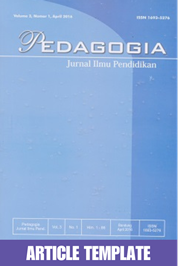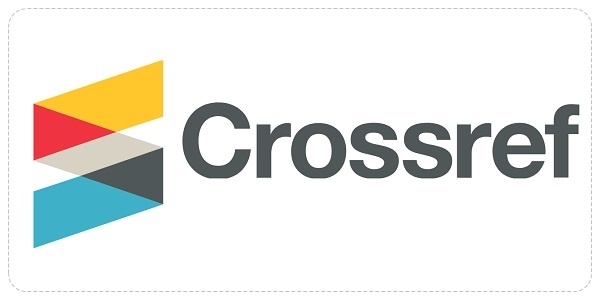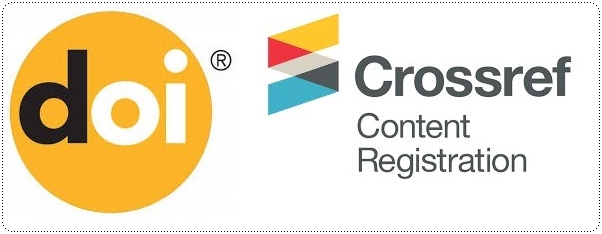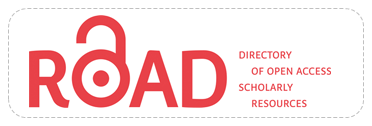Berbanjar.com: Open Educational Resources Use to Initialize Instructional Digitalization
Abstract
This main objective of this study is to acknowledge the use of berbanjar.com as open educational resources and to seek its potential use by the prospective teacher. Using case study by capturing data of the website content for the last two years after launched in 2020. Interviewing ninety-four respondents of pre-service teacher user of berbanjar.com as prospective teacher regarding their ability to develop their instructional materials and their preference to use web-based open educational resourced such as berbanjar.com. The result of the study captures more than three thousand of teaching materials has been uploaded to berbanjar.com. Instructional video, editable PowerPoint presentations and infographics is by sequence the most numerous contents of berbanjar.com. More than fifty respondents confident about their ability to develop their own materials and have the willingness to share it to others by using berbanjar.com. The use of web-based open educational resources such as berbanjar.com can help teacher to deliver their instruction digitally. The high reception of berbanjar.com by its user, in this case indicate that open educational resources can help initiate the digitalization of education.
Keywords
Full Text:
PDFReferences
AbuJarour, S., Pirkkalainen, H., Pawlowski, J., Bick, M., Bagucanskyte, M., Frankenberg, A., Hudak, R., Makropoulos, C., Pappa, D., Pitsilis, V., Tannhauser, A., Trepule, E., Vidalis, A., & Volungeviciene, A. (2015). Design principles for collaboration platforms for open education. In Proceedings of the 7th International Conference on Computer Supported Education (CSEDU-2015) (pp. 349–359). SCITEPRESS.
Biswas-Diener, R., & Jhangiani, R. (2017). Open: The philosophy and practices that are revolutionizing education and science. Ubiquity Press.
Bliss, T. J., & Blessinger, P. (2016). Open education: International perspectives in higher education. Open Book Publishers.
Brown, J. S., & Adler, R. P. (2008). Open education, the long tail, and learning 2.0. Educause Review, 43(1), 16–20.
Creswell, J. W. (2014). Research design: Qualitative, quantitative, and mixed methods approaches. 4th Edition. In SAGE Publication.
Croft, B., & Brown, M. (2020). Inclusive open education: Presumptions, principles, and practices. Distance Education, 41(2), 156–170.
Ely, D. (2008). Frameworks of educational technology. British Journal of Educational Technology, 39(2), 244–250.
Hendriyana, H., & Sutisna, M. R. (2021). Data infrastructure and information design of e-learning in primary school. Journal of Physics: Conference Series, 1987(1), 012007.
Hilton, J. (2016). Open Educational Resources and College Textbook Choices: A Review of Research on Efficacy and Perceptions. Educational Technology Research and Development, 64(4), 573–590.
Januszewski, A & Molenda, M. (2009). Educational technology: A definition with commentary. In British Journal of Educational Technology (Vol. 40, Issue 1).
Johan, R. C., Sutisna, M. R., Rullyana, G., & Ardiansah, A. (2020). Developing online learning communities. In Borderless Education as a Challenge in the 5.0 Society (pp. 145-153). Routledge.
Kanwar, A. (2015). Open Education Resources (OER): what, why, how? https://oasis.col.org/server/api/core/bitstreams/1d62a893-76ed-44a5-b5c8-35fbd58baa19/content
Lapum, J., Bailey, A., St-Amant, O., Garmaise-Yee, J., Hughes, M., & Mistry, S. (2022). Equity, diversity, and inclusion in open educational resources: An interpretive description of students’ perspectives. Nurse Education Today, 116, 105459.
Mishra, S. (2017). Open educational resources: Removing barriers from within. Distance Education, 38(3), 369–380.
Ossiannilsson, E., Altınay, Z., & Altınay, F. (2017). Towards fostering quality in open online education through OER and MOOC practices. Open Education: from OERs to MOOCs, 189-204.
Priya, A. (2021). Case study methodology of qualitative research: Key attributes and navigating the conundrums in its application. Sociological Bulletin, 70(1), 94–110.
Richter, T., & McPherson, M. (2012). Open educational resources: education for the world? Distance Education, 33(2), 201–219.
Smaldino, S. E., Lowther, D., & Russel, J. D. (2014). Instructional Technology and Media for Learning (9th ed.). Pearson Inc.
Susilana, R. (2019). Instructional Materials Development For Blended Learning Using Integrated Online Learning System (SPOT) Of Indonesia University Of Education. International Conference on Educational Technology, 2019.
Susilana, R., Dewi, L., Rullyana, G., Hadiapurwa, A., & Khaerunnisa, N. (2022). Can microlearning strategy assist students’ online learning?. Jurnal Cakrawala Pendidikan, 41(2), 437-451.
Sutisna, M. R., Yuniarti, Y., Windayana, H., & Hendriyana, H. (2021). Design of a Web-Based Digital Learning Resource Center to assist online learning with mathematics content in primary schools. Journal of Physics: Conference Series, 1987(1), 012005.
The Commonwealth of Learning. (2017). Open Educational Resources: Global report 2017. https://oasis.col.org/handle/11599/2788
UNESCO. (2020). Education in a post-COVID world: Nine ideas for public action International Commission on the Futures of Education. http://www.unesco.org/open-access/terms-use-ccbysa-en
Wiley, D., Bliss, T. J., & McEwen, M. (2014). Open educational resources: A review of the literature. Handbook of Research on Educational Communications and Technology, 781–789.
Walton, K. (2020). Role of campus community in open educational resources: the benefits of building a collaborative relationship with campus IT and distance education Departments. Library Trends, 69(2), 395-418.
Yin, R. K. (2018). Case study research and applications. Sage.
DOI: https://doi.org/10.17509/pdgia.v22i1.72290
Refbacks
- There are currently no refbacks.
INDEXED BY

This work is licensed under a Creative Commons Attribution-ShareAlike 4.0 International License















